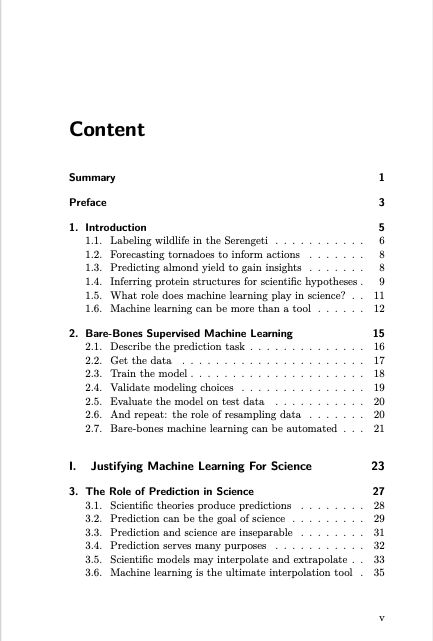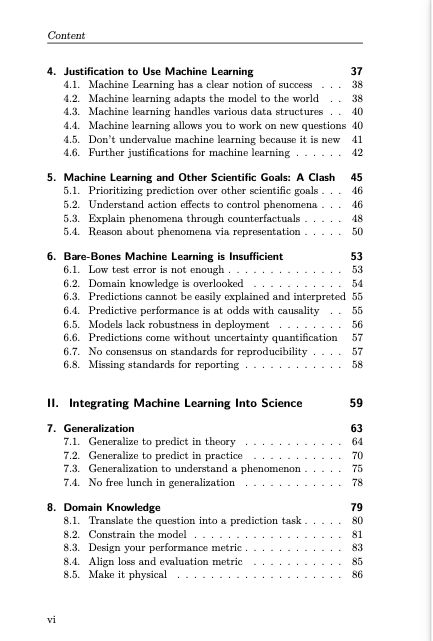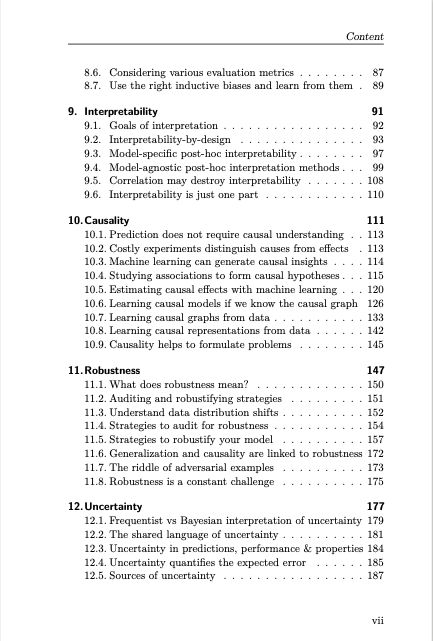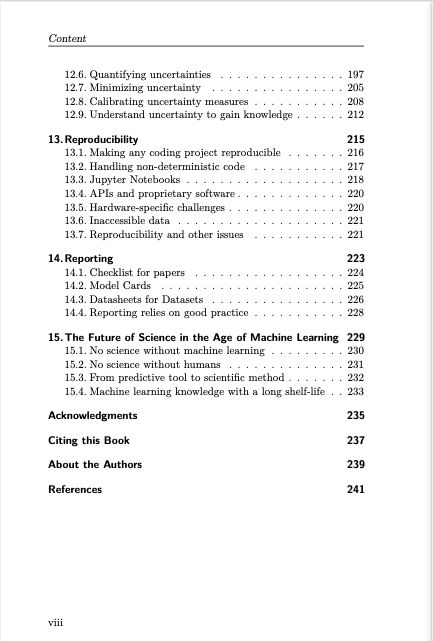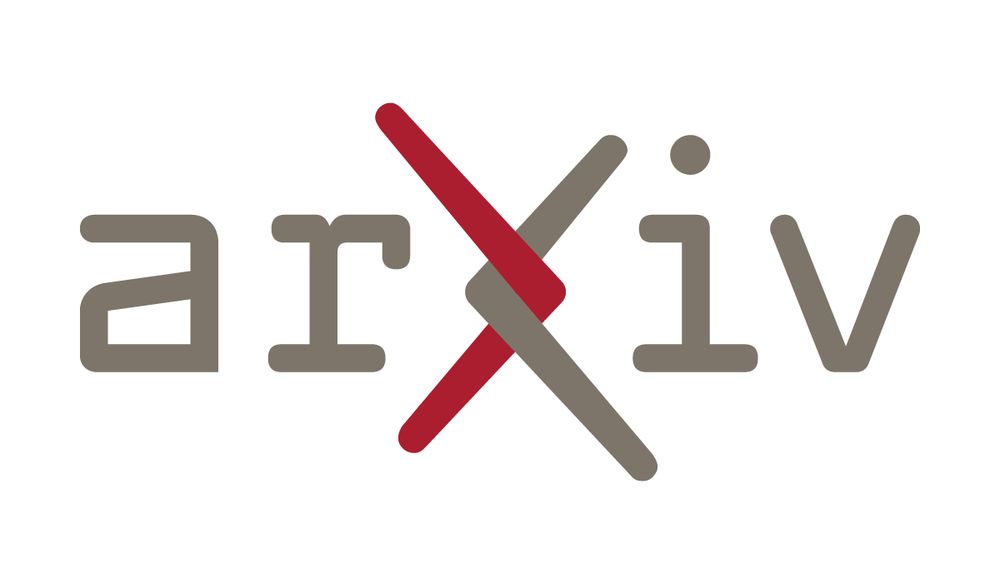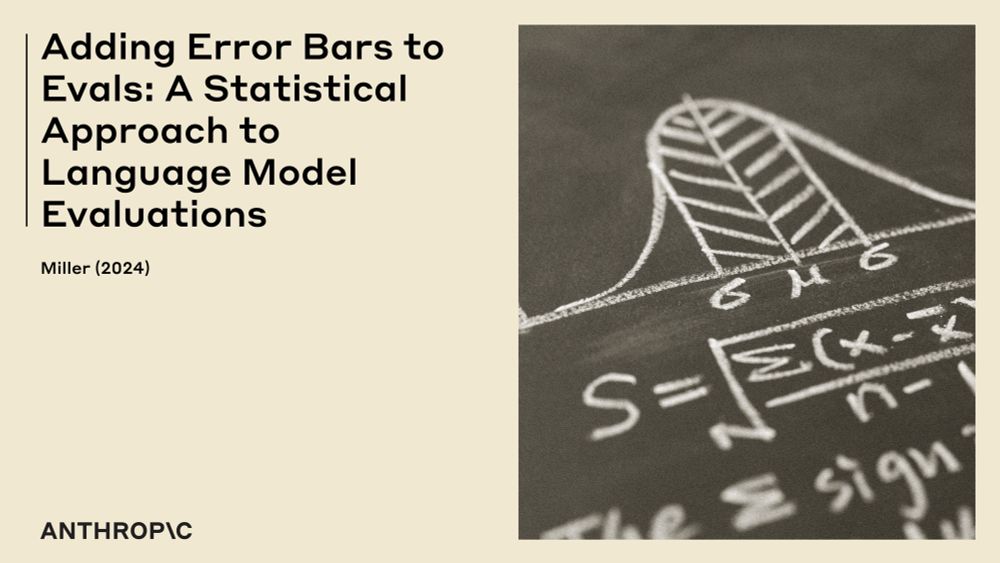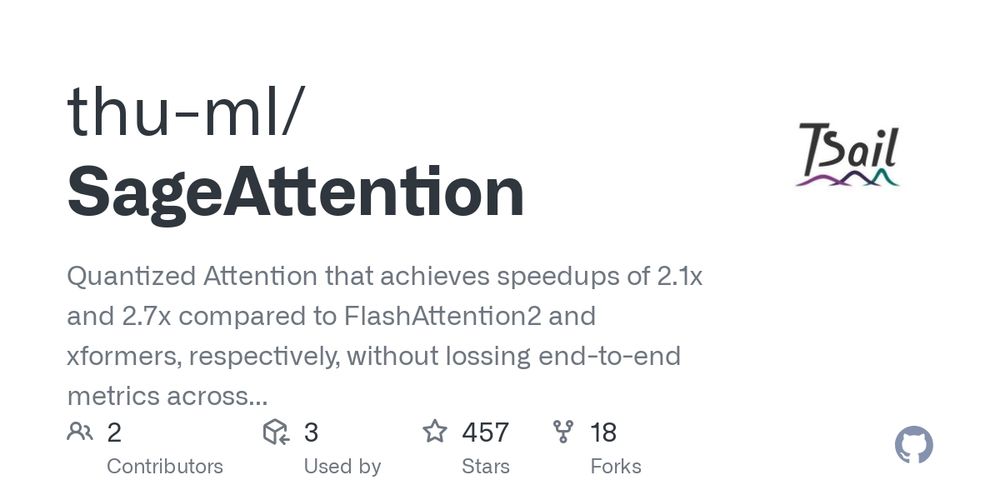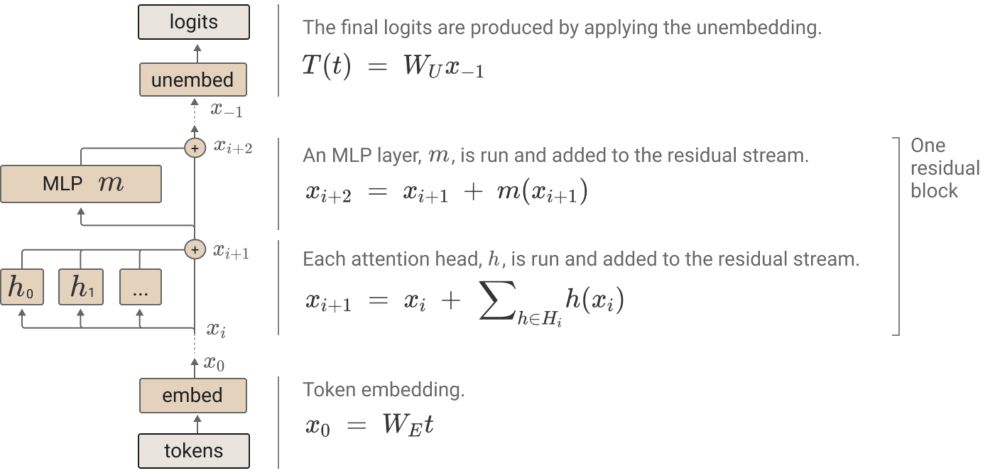Excited to highlight recent work from the lab at NeurIPS! If you’re interested in understanding why uncertainty estimates often break under distribution shift — and how we can do better — check out Yuli’s poster tomorrow.
03.12.2025 17:08 — 👍 2 🔁 1 💬 0 📌 0
ML-NYC Speaker Series and Happy Hour: Daniel Björkegren
AI for Low-Income Countries
The ML in NYC Speaker Series + Happy Hour is excited to host Professor Daniel Björkegren as our December speaker as he speaks about AI for Low-Income Countries!
Registration: www.eventbrite.com/e/ml-nyc-spe...
02.12.2025 18:21 — 👍 2 🔁 0 💬 0 📌 1
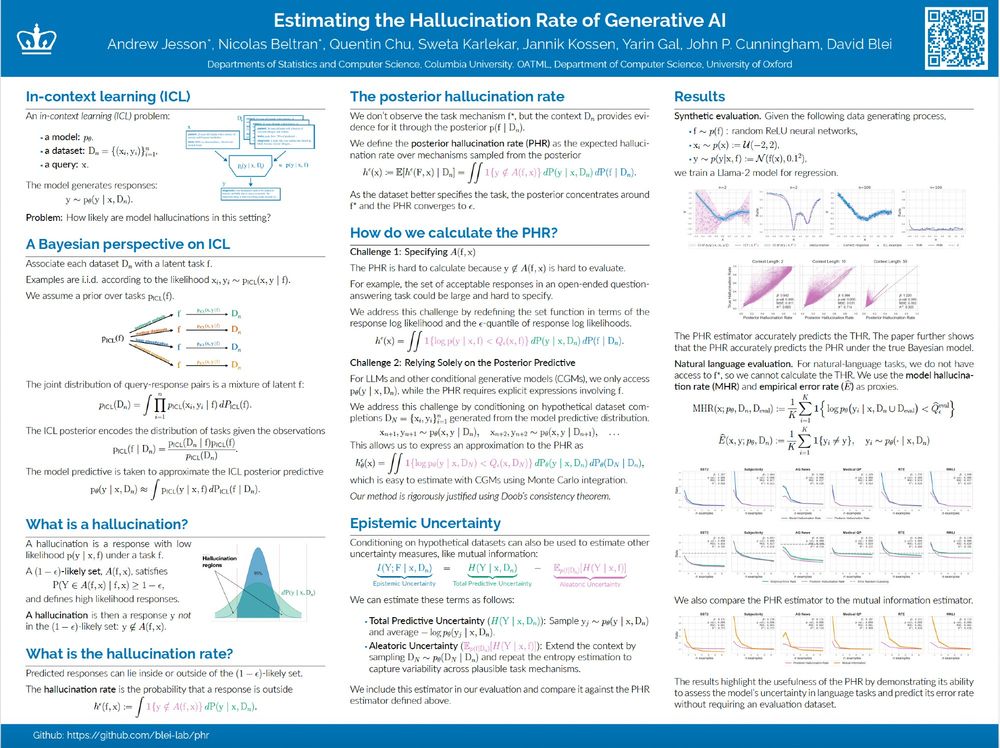
Hello!
We will be presenting Estimating the Hallucination Rate of Generative AI at NeurIPS. Come if you'd like to chat about epistemic uncertainty for In-Context Learning, or uncertainty more generally. :)
Location: East Exhibit Hall A-C #2703
Time: Friday @ 4:30
Paper: arxiv.org/abs/2406.07457
12.12.2024 18:13 — 👍 22 🔁 4 💬 0 📌 1
fun @bleilab.bsky.social x oatml collab
come chat with Nicolas , @swetakar.bsky.social , Quentin , Jannik , and i today
13.12.2024 17:26 — 👍 10 🔁 1 💬 1 📌 0
Check out our new paper from the Blei Lab on probabilistic predictions with conditional diffusions and gradient boosted trees! #Neurips2024
02.12.2024 23:02 — 👍 33 🔁 6 💬 0 📌 0
Check out our new paper about hypothesis testing the circuit hypothesis in LLMs! This work previously won a top paper award at the ICML mechanistic interpretability workshop, and we’re excited to share it at #Neurips2024
10.12.2024 19:07 — 👍 7 🔁 1 💬 0 📌 0
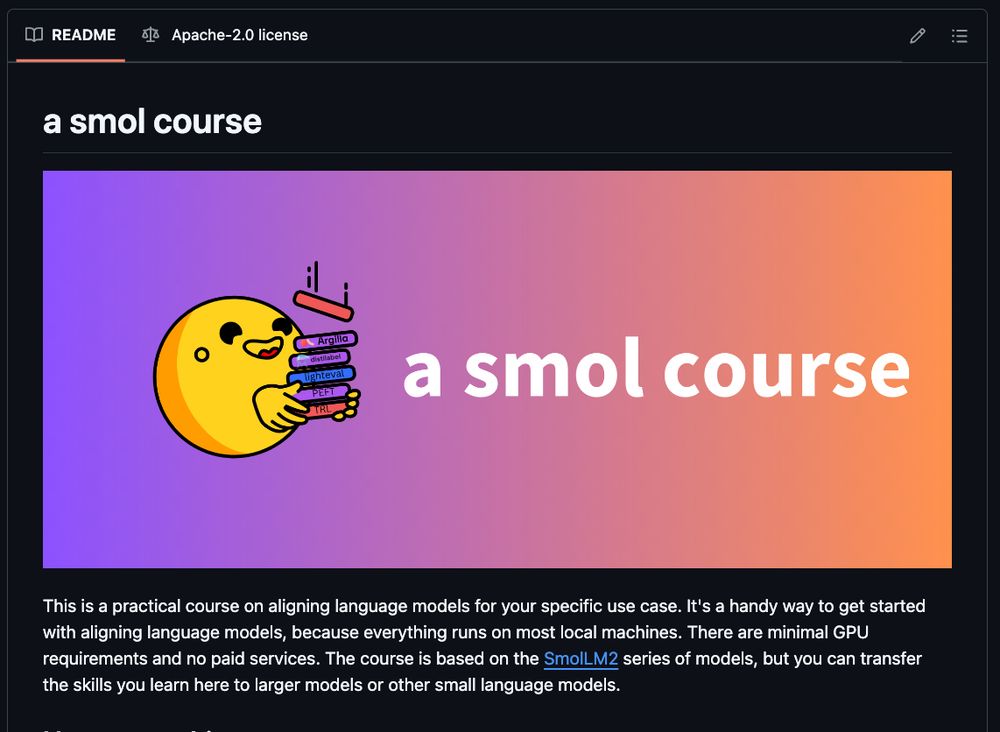
For anyone interested in fine-tuning or aligning LLMs, I’m running this free and open course called smol course. It’s not a big deal, it’s just smol.
🧵>>
03.12.2024 09:21 — 👍 326 🔁 64 💬 9 📌 4
Very happy to share some recent work by my colleagues @velezbeltran.bsky.social, @aagrande.bsky.social and @anazaret.bsky.social! Check out their work on tree-based diffusion models (especially the website—it’s quite superb 😊)!
02.12.2024 22:49 — 👍 16 🔁 1 💬 1 📌 0
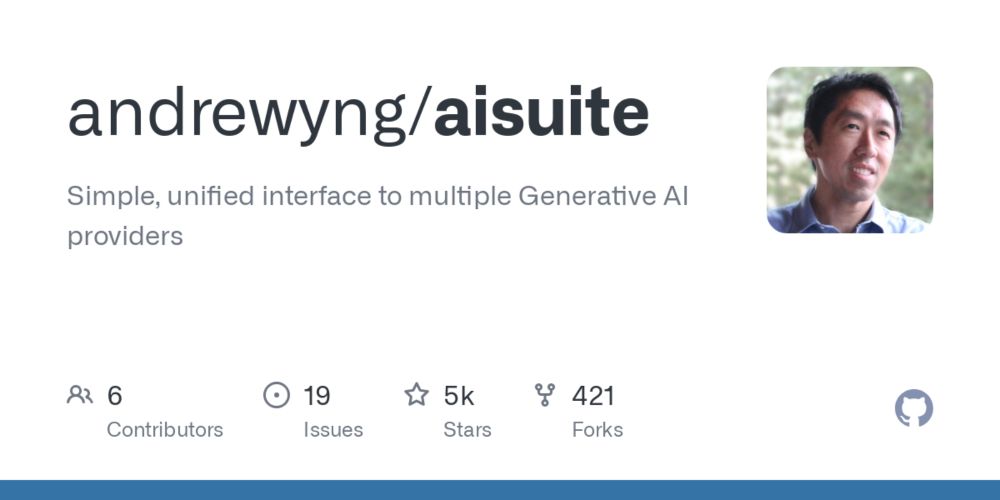
GitHub - andrewyng/aisuite: Simple, unified interface to multiple Generative AI providers
Simple, unified interface to multiple Generative AI providers - GitHub - andrewyng/aisuite: Simple, unified interface to multiple Generative AI providers
Just learned about @andrewyng.bsky.social's new tool, aisuite (github.com/andrewyng/ai...) and wanted to share! It's a standardized wrapper around chat completions that lets you easily switch between querying different LLM providers, including OpenAI, Anthropic, Mistral, HuggingFace, Ollama, etc.
29.11.2024 20:25 — 👍 23 🔁 3 💬 1 📌 0
Announcing the NeurIPS 2024 Test of Time Paper Awards – NeurIPS Blog
Test of Time Paper Awards are out! 2014 was a wonderful year with lots of amazing papers. That's why, we decided to highlight two papers: GANs (@ian-goodfellow.bsky.social et al.) and Seq2Seq (Sutskever et al.). Both papers will be presented in person 😍
Link: blog.neurips.cc/2024/11/27/a...
27.11.2024 15:48 — 👍 110 🔁 14 💬 1 📌 2
Sorry John, that isn’t my area of expertise!
25.11.2024 00:44 — 👍 0 🔁 0 💬 1 📌 0
This is very interesting! Do you have any intuition as to whether or not this phenomenon happens only with very simple “reasoning” steps? Does relying on retrieval increase as you progress from simple math to more advanced prompts like GSM8K or adversarially designed prompts (like adding noise)?
24.11.2024 16:29 — 👍 3 🔁 0 💬 1 📌 0

Many circles of different sizes, representing a visualization of inequality
The Gini coefficient is the standard way to measure inequality, but what does it mean, concretely? I made a little visualization to build intuition:
www.bewitched.com/demo/gini
23.11.2024 15:35 — 👍 199 🔁 57 💬 10 📌 8
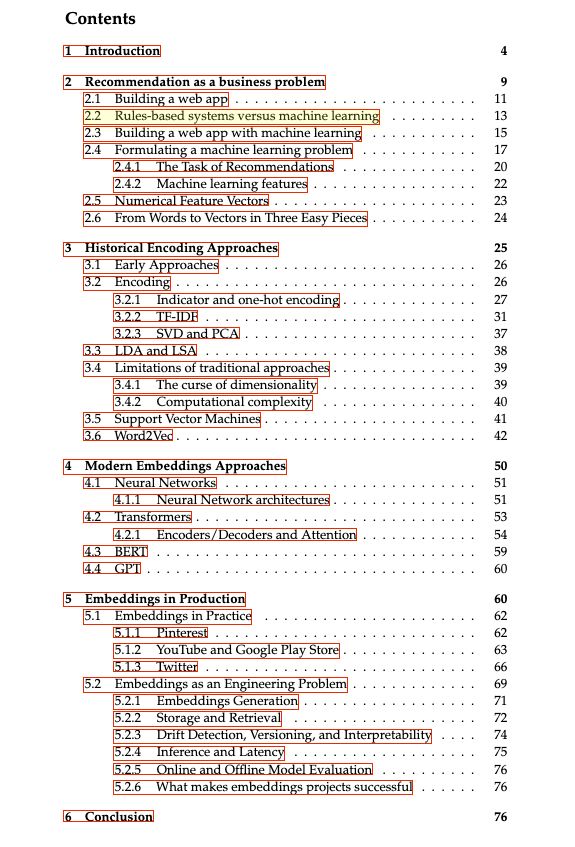
Book outline
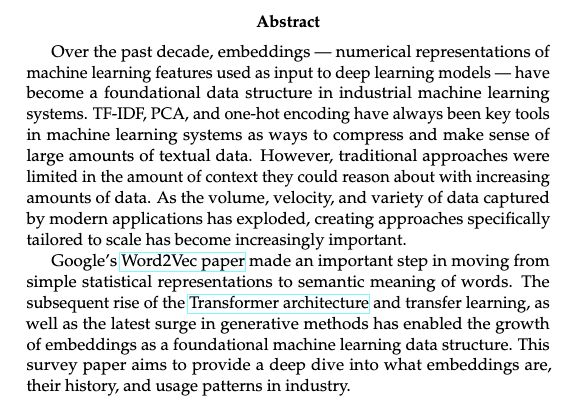
Over the past decade, embeddings — numerical representations of
machine learning features used as input to deep learning models — have
become a foundational data structure in industrial machine learning
systems. TF-IDF, PCA, and one-hot encoding have always been key tools
in machine learning systems as ways to compress and make sense of
large amounts of textual data. However, traditional approaches were
limited in the amount of context they could reason about with increasing
amounts of data. As the volume, velocity, and variety of data captured
by modern applications has exploded, creating approaches specifically
tailored to scale has become increasingly important.
Google’s Word2Vec paper made an important step in moving from
simple statistical representations to semantic meaning of words. The
subsequent rise of the Transformer architecture and transfer learning, as
well as the latest surge in generative methods has enabled the growth
of embeddings as a foundational machine learning data structure. This
survey paper aims to provide a deep dive into what embeddings are,
their history, and usage patterns in industry.
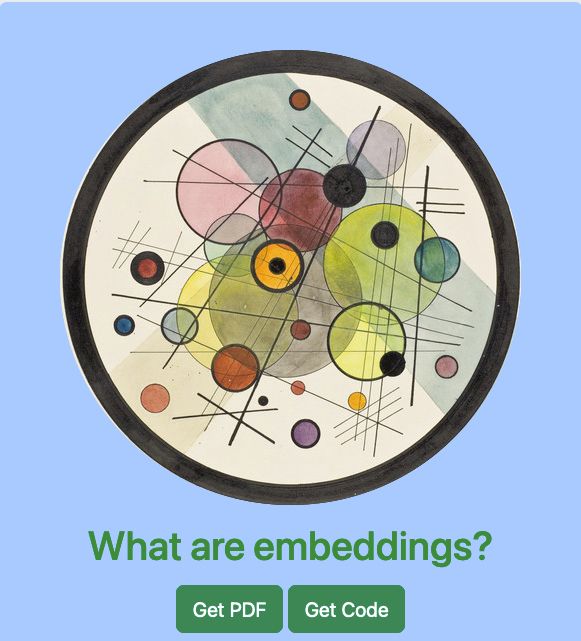
Cover image
Just realized BlueSky allows sharing valuable stuff cause it doesn't punish links. 🤩
Let's start with "What are embeddings" by @vickiboykis.com
The book is a great summary of embeddings, from history to modern approaches.
The best part: it's free.
Link: vickiboykis.com/what_are_emb...
22.11.2024 11:13 — 👍 653 🔁 101 💬 22 📌 6
(Shameless) plug for David Blei's lab at Columbia University! People in the lab currently work on a variety of topics, including probabilistic machine learning, Bayesian stats, mechanistic interpretability, causal inference and NLP.
Please give us a follow! @bleilab.bsky.social
20.11.2024 20:41 — 👍 20 🔁 3 💬 1 📌 0
Hi! Our lab does Bayesian stuff :) Could you add Dave Blei's lab to this pack as well if it's not already full? @bleilab.bsky.social
20.11.2024 15:38 — 👍 1 🔁 0 💬 1 📌 0
Could you add Dave Blei's lab to this pack as well if it's not already full? @bleilab.bsky.social
20.11.2024 15:37 — 👍 0 🔁 0 💬 0 📌 0
Could you add Dave Blei's lab to this pack as well if it's not already full? @bleilab.bsky.social
20.11.2024 15:36 — 👍 1 🔁 0 💬 0 📌 0
Could you add Dave blei's lab to this pack as well if it's not already full! @bleilab.bsky.social
20.11.2024 15:36 — 👍 0 🔁 0 💬 1 📌 0
We created an account for the Blei Lab! Please drop a follow 😊
@bleilab.bsky.social
20.11.2024 15:34 — 👍 3 🔁 1 💬 0 📌 0
Oh, I’ve been meaning to check out that YouTube series—thanks! Also sadly, there's no class website, but I can share the "super quick intro to mech interp" presentation I made. It’s somewhat rough, but hopefully, it gets the main points across! sweta.dev/files/intro_...
20.11.2024 15:08 — 👍 1 🔁 0 💬 1 📌 0

Mailing list contact information
Information to be added to the post-Bayes mailing list.
📢 Post-Bayesian online seminar series coming!📢
To stay posted, sign up at
tinyurl.com/postBayes
We'll discuss cutting-edge methods for posteriors that no longer rely on Bayes Theorem.
(e.g., PAC-Bayes, generalised Bayes, Martingale posteriors, ...)
Pls circulate widely!
19.11.2024 20:22 — 👍 16 🔁 6 💬 0 📌 3
Can’t believe I forgot about this paper, thanks so much!!
20.11.2024 13:55 — 👍 1 🔁 0 💬 0 📌 0
I haven’t read the first one but it looks very informative, thank you!! We also had a separate unit on transformer architecture; I’m going to add this to that paper list as well!
20.11.2024 13:55 — 👍 2 🔁 0 💬 0 📌 0
Starter packs I found:
AI (*about* AI, not *for* an AI) go.bsky.app/SipA7it
Spoken Language Processing bsky.app/starter-pack...
Diversify Tech's pack bsky.app/starter-pack...
Women in Tech bsky.app/starter-pack...
Great UK Commentators bsky.app/starter-pack...
Linguistics bsky.app/starter-pack...
19.11.2024 22:04 — 👍 19 🔁 3 💬 3 📌 0
Postdoctoral fellow at Harvard Data Science Initiative | Former computer science PhD at Columbia University | ML + NLP + social sciences
https://keyonvafa.com
Stats Postdoc at Columbia, @bleilab.bsky.social
Statistical ML, Generalization, Uncertainty, Empirical Bayes
https://yulisl.github.io/
San Diego Dec 2-7, 25 and Mexico City Nov 30-Dec 5, 25. Comments to this account are not monitored. Please send feedback to townhall@neurips.cc.
NASA I DARPA | MIT AI Lab | Cornell | Venture Capital | Biosecurity | Neurotech | Emmy winning media technologist | World Economic Forum Technology Pioneer
Founded Brainworks, Infinite Entertainment, Medio Labs, MobiTV, WiseTeachers & MicroDisplay
Professor at UW; Researcher at Meta. LMs, NLP, ML. PNW life.
PhD supervised by Tim Rocktäschel and Ed Grefenstette, part time at Cohere. Language and LLMs. Spent time at FAIR, Google, and NYU (with Brenden Lake). She/her.
Research Scientist at Google | Interested in rigorous evaluations, cognitive science, multi-agent systems and causality | Prev: Vector Institute, Mila, Max Planck Institute, ETH Zurich
https://ninodimontalcino.github.io/
Incoming assistant professor of chemistry at the Technical University of Denmark (DTU). Also at Jura Bio. machine learning, statistics, chemistry, biophysics
https://eweinstein.github.io/
2nd year PhD @columbianlp • Prev @stanfordnlp @GeorgiaTech • Weird Little Guy Academic • NLP, Dialogue Systems, Education • Caffeine Gremlin 🩷💜💙
Associate registered therapist and event advocate = creating space where folks can be comfortable being themselves.
Group Leader, Generative AI | NeurIPS 2024 Program Chair | Principal Scientist & Director | Founder of Amsterdam AI Solutions
Director Data Science Institute @UWMadison, Professor of Physics,
EiC @MLSTjournal. Physics, stats/ML/AI, open science.
#CS Associate Prof York University, #ComputerVision Scientist Samsung #AI, VectorInst Faculty Affiliate, TPAMI AE, ELLIS4Europe Member, #CVPR2025 Publicity Chair on X
📍Toronto 🇨🇦 🔗 csprofkgd.github.io
🗓️ Joined Nov 2024




